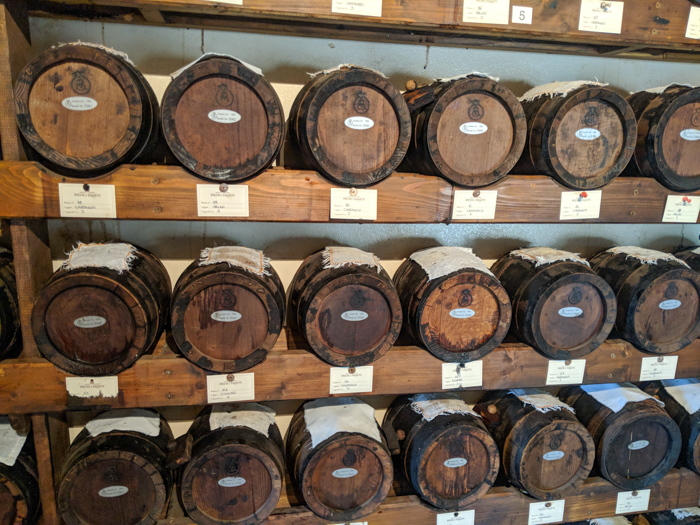 Balsamic vinegar is one of Italy’s best-known contributions to the culinary world, and is now a basic condiment found in many kitchens here in the US. It is common all over Italy, we find it at every table in the regions we visit on our Italiaoutdoors private Italy tours, but to truly appreciate the “real deal” requires a bit of background. There is a vast difference between the stuff in the $4 bottle of balsamic vinegar found in every grocery store to the authentic Aceto Balsamico Tradizionale, besides the price – the latter goes for 70 euros and up per bottle. My recent food tour of Emilia-Romagna allowed me to learn first-hand how this ancient specialty is produced, and the role it has played in the households of this region over the centuries.
Balsamic vinegar is one of Italy’s best-known contributions to the culinary world, and is now a basic condiment found in many kitchens here in the US. It is common all over Italy, we find it at every table in the regions we visit on our Italiaoutdoors private Italy tours, but to truly appreciate the “real deal” requires a bit of background. There is a vast difference between the stuff in the $4 bottle of balsamic vinegar found in every grocery store to the authentic Aceto Balsamico Tradizionale, besides the price – the latter goes for 70 euros and up per bottle. My recent food tour of Emilia-Romagna allowed me to learn first-hand how this ancient specialty is produced, and the role it has played in the households of this region over the centuries.
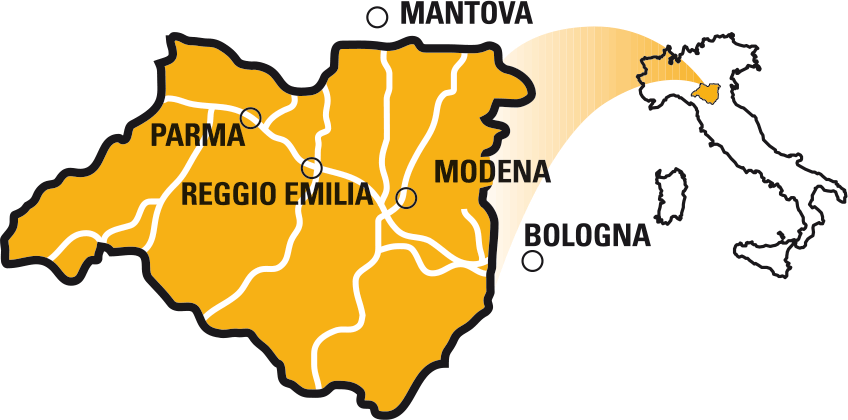
Aceto Balsamico Tradizionale hails from the Emilia-Romagna provinces of Reggio Emilia and Modena, with its origins dating almost 1000 years ago. The name comes from the Latin Balsamum, meaning a ‘balm’ or a restorative, and it was originally valued for its curative properties. Supposedly, during the plague of 1630, the Duke of Modena carried an open jug of the vinegar in his carriage to ward off the disease.
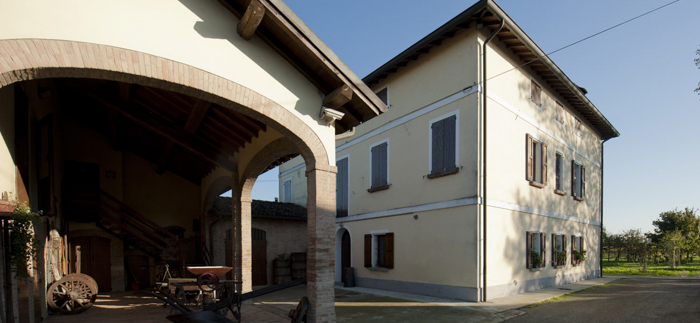
Today I am introduced to the production process of Aceto Balsamico Tradizionale by Alessandra Medici of Acetaia Medici Ermete. Medici Ermete is primarily a family run winery, operated by her brothers, producing some wonderful Lambrusco. Alessandra oversees the small Acetaia (the vinegar production), more of a passion than an economic venture – their very small annual production sells out through direct sales.
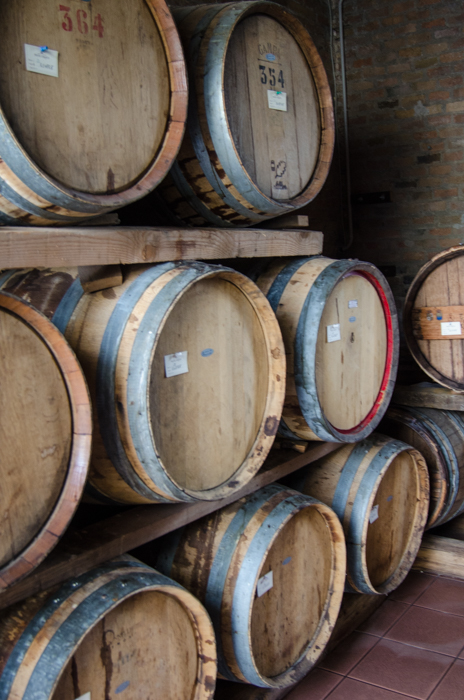
We begin with a stop on the ground floor of the barn that houses rows of wine barriques on one side, and smaller barrels on another. This is the first stop in the production process. Aceto Balsamico Tradizionale begins with a single ingredient – grape must – freshly pressed grape juice that contains the skins, seeds, and stems of the fruit. At Medici Ermete it is the local Trebbiano grape that is pressed, and then the must is cooked for 24 hours. After cooking, the mosto cotto, cooked grape must, is transferred to the barriques, where it sits for the next 2 years. Seems like a long time, but we are just getting started.
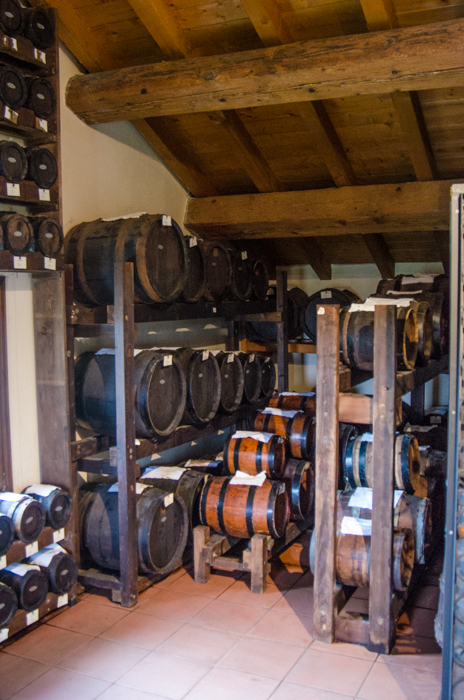
Next, we head upstairs to the top floor of the barn. In the farmhouses and estates across Reggio Emilia and Modena where Aceto Balsamico Tradizionale has been produced for centuries, enter their well ventilated attics and you will see one or more series of wooden barrels of increasing size, called a battery. The number of barrels in a battery may vary, but the minimum is 3, and the Aceto Balsamico Tradizionale DOP regulations require at least 7 barrels, and a total aging period of at minimum 12 years. The types of wood used for the barrels varies as well, one may be chestnut, one cherry, one mulberry. Storing in the well-ventilated attic is also crucial, the temperature variations throughout the year, the heat of the summer months alternating with the cold and dry winters, contribute to the development of the flavors.
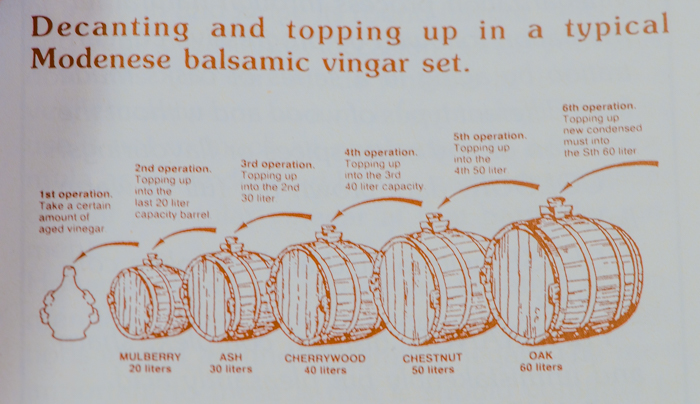
Alessandra leads me through the use of the barrels here in the attic. Each year, about 3 liters of vinegar is removed from the smallest of the barrels in each battery, and placed in an even smaller barrel that will go off to be bottled by the Consortium, or used by the family. The smallest barrel is then topped off from the next smallest barrel of the battery, and so on down the line. The sweet, 2 year aged mosto cotto is then used to top off the largest barrel, beginning its slow progress into the wonderful balsamic vinegar – now one may understand why, in Modena, it is said “One generation makes balsamic for the next.”
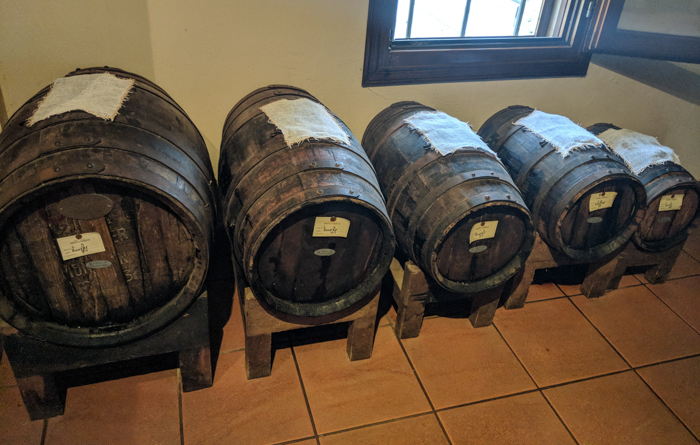
Alessandra proudly shows me the many series of barrels owned by her family. For centuries, when a daughter was born, a family would mark the occasion by beginning her battery. This became part of her dowry when she married, and one of the families most prized possessions. I’ve read that saving the oldest barrels in the battery was a family priority during the wartime evacuations of WWI and WWII. Alessandra shares that as her family produces 90% male children, they begin a battery for both genders. She shows me the batteries for her two teenage sons, her sisters, and then leads me to a very old battery off by itself, which belonged to her grandfather and is over 100 years old.
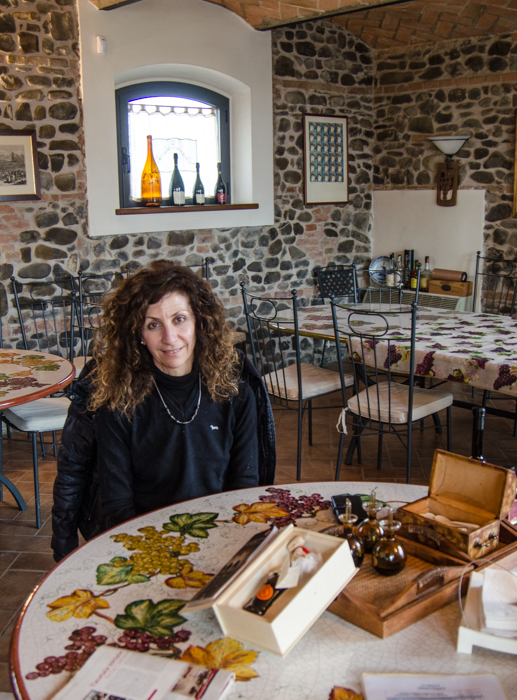
Our last stop is the tasting room, where I get to sample the three types of Aceto Balsamico Tradizionale she produces. We begin with the Red label, which as the youngest is aged 12 to 20 years. The difference between the “real deal” and the grocery store options is immediately obvious – this is thick, almost syrup like as it is slowly poured into a tasting spoon. It is not sour, as you would expect a vinegar to be, but has a mellow sweet-tartness. The flavor is complex and rich, with notes of dried fruits, fig, molasses, and chocolate, and flavors of wood. The youngest is recommended for serving with grilled and raw vegetables, prosciutto, and other fresh antipasti. Or drizzle a bit over a risotto – do not add during cooking, as this will destroy its flavor.
Next, the silver label, aged 20 to 25 years. Denser, more complex flavors. Great with aged cheeses, Gorgonzola, fresh fruit. Drizzle over ice cream or fruit desserts.
Finally, the Gold label, aged more than 25 years. Serve simply to appreciate its thick and glossy consistency and multi-layered flavor profile – drizzle over 48 month aged Parmigiano-Reggiano cheese or fresh ripe strawberries. A small spoonful all alone at the end of a dinner is believed to assist in digestion, harking back to its ancient reputation as a curative balm.
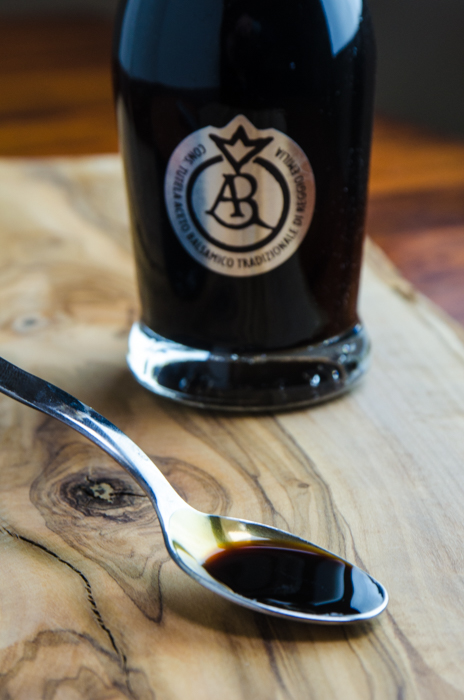
So by now you are no doubt wondering – what am I buying in the grocery store?
Balsamic Vinegar
You can find very inexpensive “Balsamic Vinegar” in every grocery store. These products are typically wine vinegar to which coloring, sugar and flavoring has been added to mimic the texture and flavor of balsamic at a fraction of the price. Some may actually come from Italy, but that fact is no guarantee of higher quality.
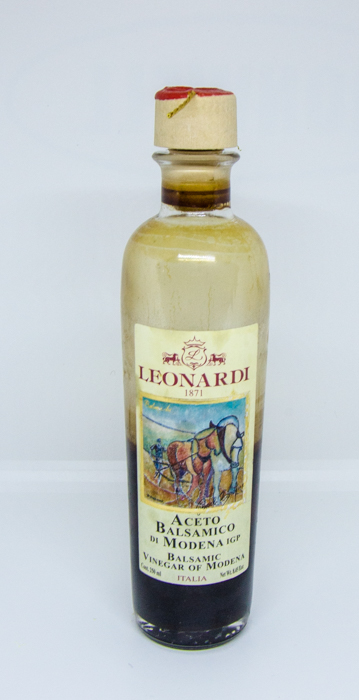
Aceto Balsamico di Modena IGP
The first balsamic vinegars sold in the US arrived in 1977, sold through gourmet stores like Williams-Sonoma. The demand quickly outstripped supply. This surge in popularity led to a rise in imitations, which led to the introduction of a protected designation (DOP) for the true Aceto Balsamico Tradizionale to differentiate the real thing from the inexpensive knock-offs. At the same time, the production Consortium of Modena began to look for a way to capitalize on the popularity of balsamic vinegar with a product that offered some measure of quality at a more accessible price point.
The IGP designation, defined by the European Union in 2009, was their opportunity. This offered a framework where the local producers could create a product under the Modena name that could not be replicated elsewhere, but produced in much higher quantities and at a much lower price point than the Aceto Balsamico Tradizionale DOP. Aceto Balsamico di Modena IGP is made from grape varietals typical of Modena, though the grapes can be from anywhere and only need to be processed in Modena. The vinegar is cooked in large pressurized vats and aged for at least two months in large wooden barrels. There is no fermentation stage. Balsamic Vinegar of Modena IGP must contain enough wine vinegar to meet an acidity level of at least 6%, and can contain up to 50% wine vinegar. It may contain thickening agents, caramel, or other colorants to make it more like real balsamic. They can range in price from a few dollars to $50, depending upon the ingredients and aging.
Look for Aceto Balsamico di Modena IGP on the label, as well as the EU IGP logo. The IGP and DOP logos are shown below. Higher quality versions will usually have a thicker consistency and fewer ingredients, with grape must at the top of the list.
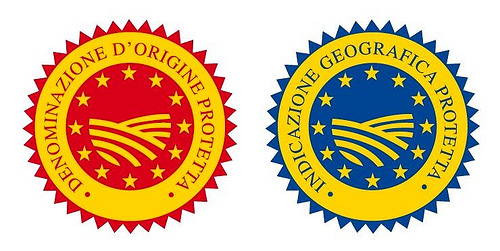
Aceto Balsamico Tradizionale DOP
These you won’t find in your grocery store, and might be under lock and key at your gourmet store. The small bottles are packaged in sturdy boxes, the Consortium bottles the product and requires very distinctive packaging and specific labeling. The two options are shown below, the first the Aceto Balsamico Tradizionale di Modena DOP and then the Aceto Balsamico Tradizionale DOP di Reggio Emilia.

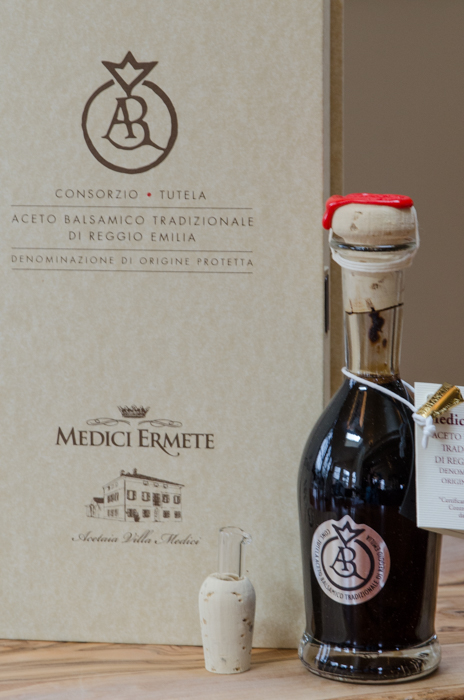
To learn more about Medici Ermete, visit them on line at the Medici Ermete web site. Thanks again to Food Valley Tours for connecting me with Alessandra Medici.

Pingback: Eating My Way Through Italy: Elizabeth Minchilli | Italian Food, Wine, and Travel
Pingback: Zucca Arrosto con Aceto Balsamico Tradizionale - Roasted Squash with Balsamic | Italian Food, Wine, and Travel